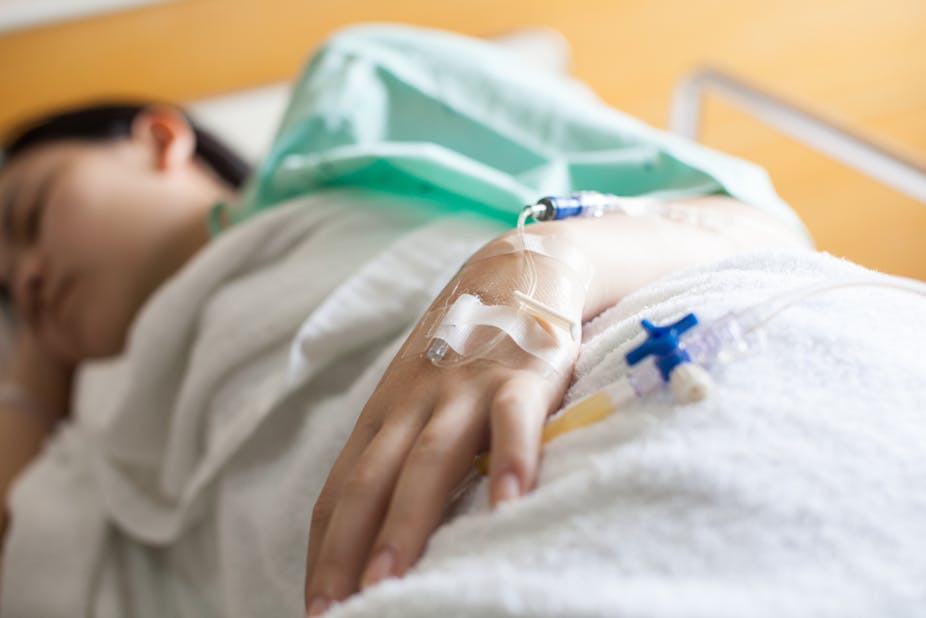Infections, like taxes, are inevitable (to paraphrase Benjamin Franklin). Most are acquired in the community and the dangerous ones are, in the main, very difficult to prevent. But many infections are preventable and, regrettably, most of these occur as a consequence of hospitalisation.
It has been estimated that around 180,000 hospital-acquired infections occur in Australia each year and these infections result in almost two million additional days in hospital.
About ten years ago, health systems belatedly acknowledged that the means of reducing the transmission of infection in hospitals was right before our eyes: on our hands, to be precise.
Even before bacteria had been identified as the cause of contagion, Dr Ignaz Semmelweis, a Hungarian-born physician working in the Vienna Hospital in the 1840s, proved that his dirty-handed medical staff were responsible for the high death rate of women after childbirth.
He observed that women who gave birth who were attended by medical staff had a 13% death rate from “puerperal sepsis” (now known to be caused by Group A Streptococcal infection). The women who gave birth in the midwife-led ward had a sepsis rate of only 2%.

When Semmelweis made his doctors and medical students wash their hands in a chlorinated solution after they had performed a postmortem on a recently deceased mother – and before they went next door to the delivery ward to attend another birth – the death rate fell to 2% within a month.
Semmelweis’ findings were rejected by his peers who refused to believe that medical staff could be responsible for the transmission of disease. Nevertheless, within decades the germ theory of infectious diseases had been universally accepted. The ability of invisible micro-organisms to cause serious illness and death became a plank of Western medicine.
By the turn of the 20th century surgeons learnt how to minimise (but not eliminate) the risk of surgical infection through sterilisation of instruments, the creation of clean operating theatres and the wearing of sterile gowns and gloves.
The introduction of antibiotics in the mid 20th century further reduced the risk of post-operative infection and the wards that had been full of patients suffering from dreadful infections soon emptied out.
But over the next two generations the medical community lost much of its previous respect for germs. The increasing availability of antibiotics moved the emphasis of infection control from “prevention” to “cure” and it would not be until rates of antibiotic resistance were too high to be ignored that the medical profession started to re-learn the lessons of a previous century.

In 2009 the World Health Organization released its international guidelines on hand hygiene in health institutions. They were inspired by the work of a modern-day Semmelweis, the Swiss-born Didier Pittet, who showed that increasing compliance with hand hygiene in his hospital from 48% to 66% reduced the rate of bacterial infection from 16.9% to 9.9% and more than halved the number of antibiotic-resistant Staph aureus (MRSA) infections.
Our antipodean Semmelweis, Professor Lindsay Grayson, leads the Commonwealth government-funded Hand Hygiene Australia. As a result of this program, which promotes alcohol-based hand rub instead of soap and water, hand hygiene compliance in Australian hospitals has increased from less than 50% to 75.7% in just three years.
Alcohol-based hand rub has been the “disruptive innovation” here. Washing hands with soap and water before and after every single patient contact takes too long. So staff apply hand rub and move between tasks while it is drying. Bottles of hand rub can be placed throughout the hospital, acting as constant reminders to perform hand hygiene.
But this remarkable achievement in hand hygiene was spoilt by one disturbing statistic – doctors only increased their compliance rate to 62.2% in 2012, showing us to be the poorest performing of all the health professions.
It isn’t entirely clear why doctors take a more relaxed approach to infection control than our nursing and allied health colleagues. One reason may relate to modelling of behaviour – health professionals are tribal and follow the lead of their professional peers. At our medical school, we provide intensive education about hand hygiene for our medical students but when they enter the hospital they are influenced by the example of their often unwashed supervisors.

One of my infectious diseases colleagues, Paul Johnson, says doctors with unwashed hands are like bees which move through the hospital, cross-infecting their patients with micro-organisms instead of pollen. Medical cultures, it would appear, are much harder to change than microbiological cultures.
We are now entering a time when the end of antibiotics may be in sight for many bacterial infections. This will have terrible implications for people who are at increased risk of infection, such as those with kidney, heart and bone marrow transplants.
It may become too risky to implant total hip and knee replacements and the risk of death from previously simple-to-treat infections such as pneumonia and urinary tract infections may return to that of the pre-antibiotic era.
So, part of the solution is, well, a solution: alcohol-based hand rubs that cost only a few cents per treatment and which dramatically reduce the chance of transmitting infections from patient to patient. Seems simple, really.
This is the first article in Superbugs vs Antibiotics, a series examining the rise of antibiotic-resistant superbugs. Click on the links below to read the other instalments.
Part two: Superbugs, human ecology and the threat from within
Part three: We can beat superbugs with better stewardship of antibiotics
Part four: The hunt is on for superbugs in Australian animals
Part five: The last stand: the strongest of the superbugs and their antibiotic nemesis
Part six: Unblocking the pipeline for new antibiotics against superbugs
Part seven: A peek at a world with useless antibiotics and superbugs
Part eight: Trading chemistry for ecology with poo transplants
Part nine: New antibiotics: what’s in the pipeline?

